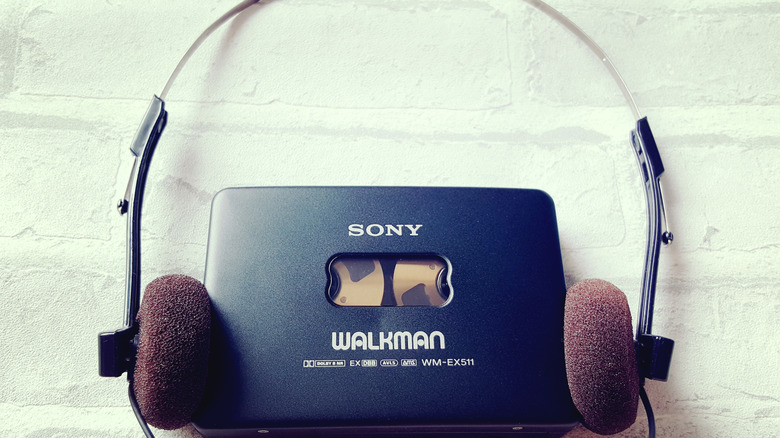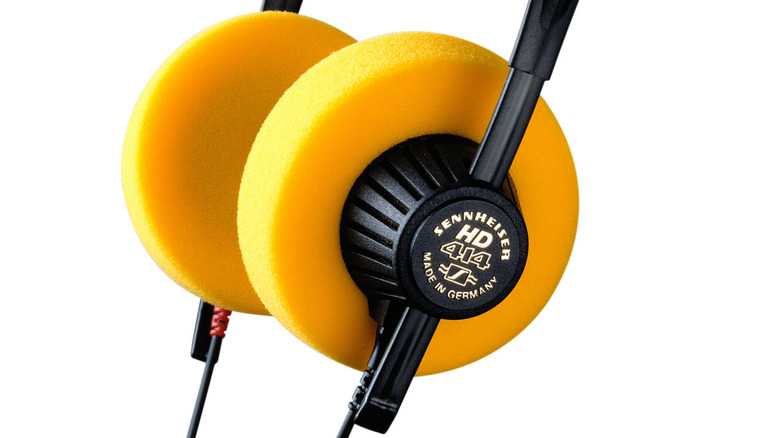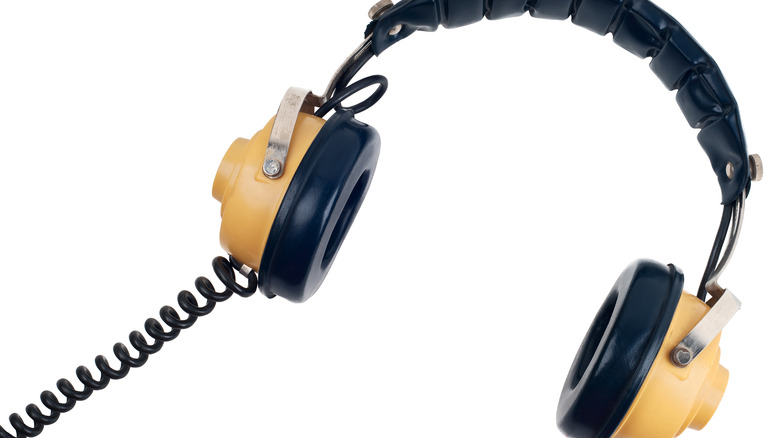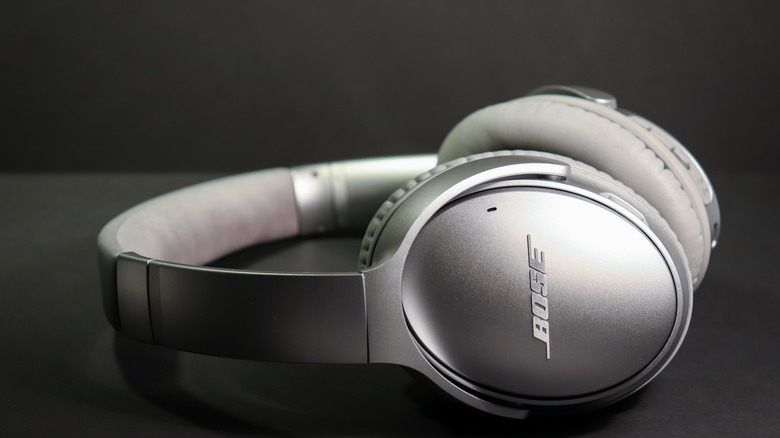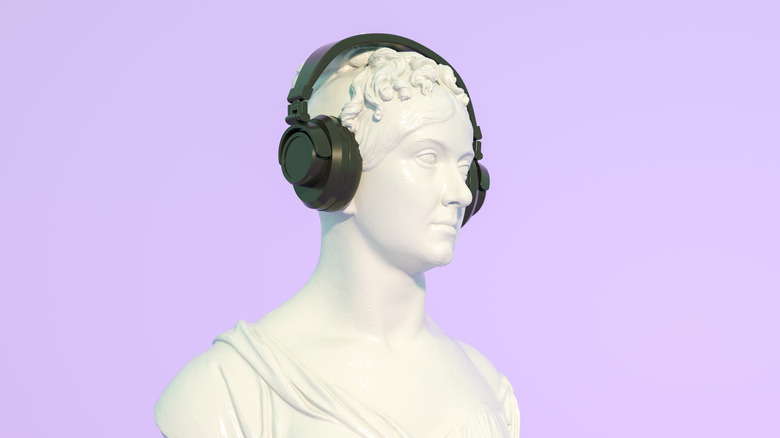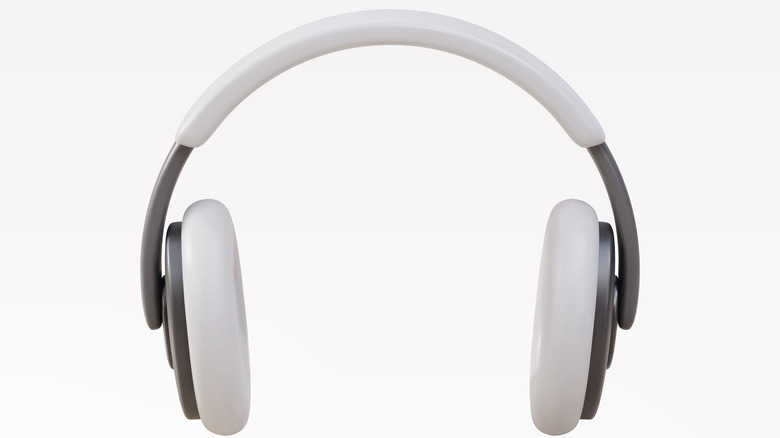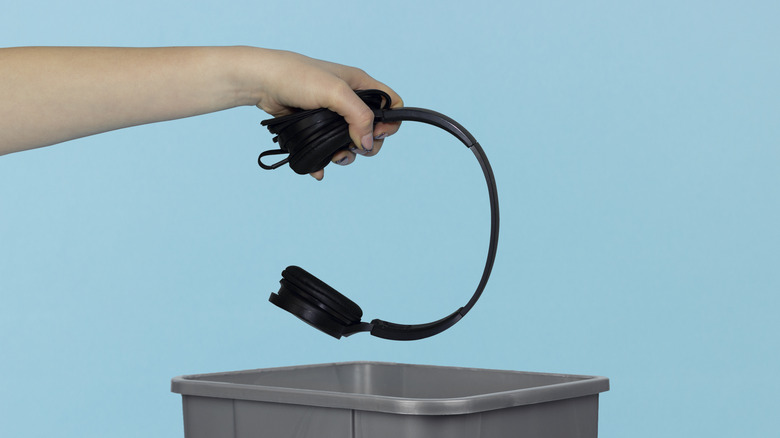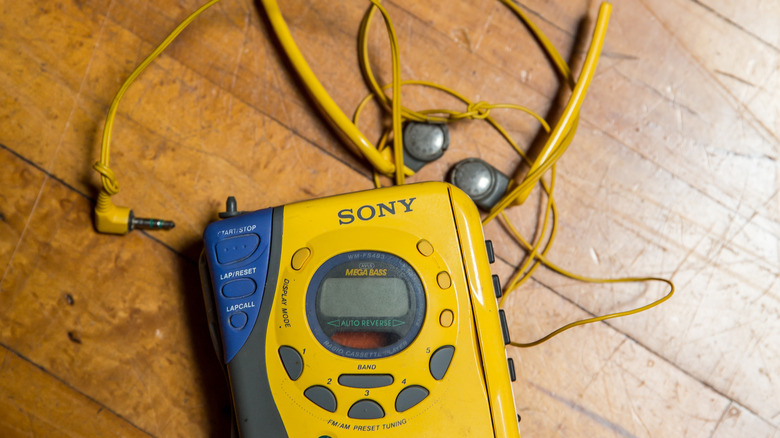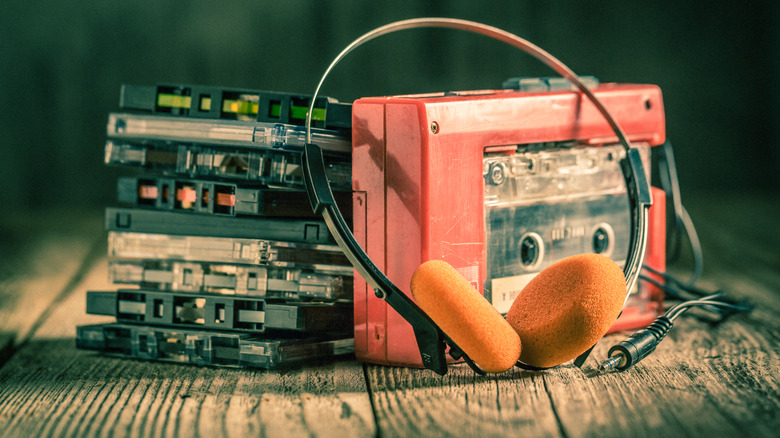Audio Nostalgia: Everything To Consider When Purchasing Vintage Headphones
As the years go by, headphones only get better and better. Whether it be actual audio quality or new conveniences, such as wireless connectivity, being introduced, there's plenty of reason to own an up-to-date pair of headphones. However, that's not to say that you can't take a step back in time to something more vintage. Audiophiles and casual listeners alike are rediscovering the warmth, character, and craftsmanship of headphones of days past and the results aren't all bad.
The allure of vintage headphones can lie in a few different areas, such as the aesthetic appeal of an old set, the unique sonic signature of certain vintage pairs, and the potential savings one can get from old headphones. From the iconic models of the 1970s to the electrostatic wonders of the 1980s and something more modern within the early 2000s, vintage headphones offer a diverse range of audio profiles and visual appeal that often can't be replicated by their modern counterparts.
All told, getting a vintage pair of headphones is not without its challenges. It is crucial to navigate the potential pitfalls and consider the various factors that can make or break the experience. From understanding the intricacies of different driver technologies to grappling with the maintenance demands of aging equipment, purchasing vintage headphones requires a blend of passion and realism. Whether you're a seasoned audiophile or a curious newcomer, there could be merit for you in taking a step back in time and trying a pair of vintage headphones.
Before you take the plunge, there are many factors to consider.
What classifies as vintage?
Defining what truly qualifies as "vintage" in terms of headphones can be a nuanced endeavor, as the term is often thrown around casually, leading to some confusion among enthusiasts. This is because there isn't any kind of strict chronological guideline as to what qualifies as vintage in this space. For the most part, you'd be safe to call anything made prior to the year 2000 vintage at this point, especially because of how quickly technology has evolved in terms of headphones.
One of the most notable categories within the vintage realm is dynamic driver headphones. These classics are characterized by a diaphragm that moves back and forth within a magnetic field, translating electrical signals into audible sounds. Renowned models like the Sennheiser HD 414, introduced in 1968, and the Audio-Technica ATH-2, released in the late 1970s, exemplify the enduring appeal of dynamic driver technology.
By the 1980s, electrostatic headphones began to make their mark. These high-end marvels utilize a different technology, relying on a thin diaphragm suspended between two charged plates. While relatively rare, electrostatic headphones like the Stax SR-Lambda series are celebrated for their unparalleled clarity and detail.
The late 1970s through the 1980s also saw the rise of planar magnetic headphones, which employ a thin diaphragm suspended between magnets to produce sound. Models such as the Audeze LCD-2, pay homage to the classics of yesteryear, offering a unique combination of accuracy and musicality.
Understanding the distinctive characteristics of these different technologies is crucial for enthusiasts seeking a specific audio profile or a particular vintage aesthetic. Dynamic drivers often deliver a warm and engaging sound signature, while electrostatics emphasize precision and detail. Planar magnetics, on the other hand, strike a balance, offering a blend of clarity and musicality.
What are you after?
Setting off to buy a pair of vintage headphones will first require you to think about what you want. Are you an audiophile after a hyperspecific listening experience, or do you just want a usable pair of headphones that look like they're 30 years old? Or, perhaps you're just looking to save a bit of money on an older set that will still give you an above-average listening experience. Understanding your preferences and priorities will guide your exploration, ensuring that the vintage headphones you choose align with your expectations and desires.
At the heart of the audiophile's journey lies the headphones' driver. Each category of vintage headphones — dynamic drivers, electrostatics, and planar magnetics — offers a distinct audio profile. Consider your musical preferences and the genres you most frequently enjoy. Vintage headphones can have a unique charm when paired with specific types of music, whether it's the thumping bass of classic rock, the intricate details of jazz, or the soaring highs of orchestral compositions. Knowing what you want to accentuate in your music will help narrow down your choices within the vintage landscape.
For some, the allure of vintage headphones goes beyond their sonic qualities. Collectors, in particular, often seek out rare and iconic models, valuing the historical significance and design aesthetics as much as the audio performance. If you fall into this category, you may find yourself drawn to limited-edition releases, discontinued classics, or headphones that simply look out of place in the modern day.
Alternatively, if your primary focus is on achieving an authentic vintage audio experience, you'll want to prioritize models that maintain their original components and exhibit minimal wear and tear. Restoring vintage headphones can be a rewarding project, but it requires time, and sometimes a willingness to navigate sourcing replacement parts.
Technological advances
Another very important consideration to bear in mind when mulling over a vintage pair of headphones is the convenience of modern technology. When you listen to music, are there certain modern features you find yourself using obsessively? It's worth noting the significant shift in audio consumption habits over the years.
The modern landscape is dominated by wireless technologies, with Bluetooth-enabled headphones providing convenience and freedom of movement. While audio purists may argue for the virtues of wired connections, the wireless revolution has undeniably transformed the way audio is experienced, presenting a stark contrast to the era when cords were an inseparable part of the headphone experience.
The small technological advances you'll be missing by purchasing a vintage headset don't end at being tethered to whatever you're listening to something on. A couple of the great modern conveniences available in most headphones are great noise cancellation technology and transparency modes. While vintage noise-cancelling headphones certainly exist, the technology reached greater heights in the 2000s and 2010s.
It's essential to acknowledge the technological advances that have shaped the landscape of audio over the decades. Understanding these developments not only has the potential to heighten your appreciation for vintage models, but they can also help you know whether or not a vintage set of headphones is really for you.
Cost and value
Vintage audio gear, with its rich history and unique characteristics, often commands a price reflective of its rarity and desirability. Understanding the factors that influence the cost of vintage headphones is crucial for enthusiasts seeking both an authentic audio experience and a wise investment.
One of the main factors driving the cost of vintage headphones is their rarity. Limited production runs, discontinued models, and unique designs contribute to the scarcity of certain headphones, elevating their value among collectors. For instance, sought-after models like the Yamaha HP-1 or the iconic Sennheiser Orpheus HE90 can command high prices due to their limited availability and esteemed status in the audio community.
However, a set of headphones doesn't have to be highly acclaimed as one of the best sets ever to reach an astronomical price point. One set of vintage headphones that slowly reached acclaim for being reasonably priced and high-quality is the Sennheiser HD580s. Due to the hype and acclaim that has surrounded the ancestor of the Sennheiser HD600s, the price of the HD580s has ballooned into the $200-300 range.
The state of preservation significantly influences the price tag attached to a pair of vintage headphones. Pristine, well-maintained models with original components often fetch a premium, as they offer a closer approximation of the intended sound and aesthetic. Conversely, headphones requiring restoration or replacement parts may be more budget-friendly initially, but the cost of refurbishment should be factored into the overall investment.
While owning a piece of audio history can be thrilling, the ultimate goal is often an outstanding listening experience. It's important to carefully assess whether the price premium associated with a rare model aligns with your expectations for audio quality or if there are more accessible options that deliver a comparable sonic experience.
Differentiating vintage from used
One crucial thing to distinguish is the canyon of difference between the terms "vintage" and "used." While these terms are sometimes used interchangeably, they carry distinct implications that can significantly impact your experience as an enthusiast. Vintage headphones, as previously defined, generally hail from before the 2000s. Acquiring authentic vintage headphones involves exploring the gems that have stood the test of time, offering a genuine glimpse into the sonic aesthetics of past decades.
On the other hand, "used" refers to headphones that have seen previous ownership, regardless of their age. This category encompasses a broad range, from relatively recent models to those that may indeed be vintage but have been subject to wear and tear over the years. While the used market can present opportunities to find vintage gems at more accessible price points, it also introduces considerations related to the condition of the headphones.
When venturing into the realm of used headphones, carefully evaluating their condition is paramount. Scrutinize the ear pads for signs of wear, inspect the headband for cracks or deformities, and examine the cable for any fraying or damage. Additionally, inquire about the functionality of essential components, such as the drivers and connectors. The closer a used pair aligns with its original condition, the more likely it is to preserve the sonic qualities and aesthetic charm that make vintage headphones special.
For those with a penchant for hands-on projects, the used market can be a treasure trove. Many vintage headphones, even those showing signs of wear, are candidates for restoration. However, embarking on a restoration project requires both skill and dedication, so it's essential to consider your comfort level with such endeavors.
Comfort
One often-overlooked aspect that can significantly enhance or detract from that experience is comfort. Unlike modern designs that benefit from the latest ergonomic advancements, vintage headphones were crafted in an era when comfort might not have been prioritized to the same extent. Thus, comfort
Vintage headphones often feature headbands that may lack the plush padding found in contemporary models. Some vintage headphones come with adjustable headbands, while others have a fixed design. Consider your head size and shape, as well as your preference for over-ear, on-ear, or in-ear designs, as these factors contribute to overall comfort.
Another significant variable in buying vintage headphones is weight, and how that weight is distributed. These factors can play an enormous role in comfort. Heavier models may cause fatigue during extended listening sessions, particularly if the weight is unevenly distributed. Some vintage designs feature a more even weight distribution, while others may exert pressure on specific areas of the head. Consider your tolerance for prolonged wear and how the headphones distribute their weight for an optimal listening experience.
The adjustability of vintage headphones can influence comfort, especially for users with specific ergonomic preferences. Some models offer flexibility in adjusting the ear cups or headband to accommodate different head sizes and shapes. Limited adjustability may pose challenges for achieving an optimal fit. Customization options, such as aftermarket headbands or ear cushions, can provide a tailored comfort solution for vintage headphone enthusiasts. While modifications can enhance comfort, purists may prioritize preserving the original design and components. It's a personal choice that depends on individual preferences and the intended use of the headphone, whether for extended listening sessions, display, or occasional use.
Junk from every era
The term "junk" isn't necessarily derogatory. Rather, it serves to highlight the wide variety of headphones with diverse conditions, functionalities, and historical significance. Scouring eBay, thrift shops, flea markets, and garage sales can be a thrilling treasure hunt for vintage audio enthusiasts. However, amidst the hidden gems, some headphones may have seen better days. While intriguing, identifying restoration projects mandates a discerning eye and a willingness to invest time and effort in restoration if they are to be transformed from junk to cherished audio artifacts.
Sometimes, what appears as junk at first glance might be an affordable entry point into the world of vintage headphones. Models that have been neglected or overlooked can serve as ideal projects for those interested in restoration. While they may lack the prestige of high-end classics, these budget-friendly finds can offer a gateway for enthusiasts to experiment with restoration techniques, learn about the inner workings of headphones, and develop valuable DIY skills.
The world of vintage audio is replete with unbranded or lesser-known headphone models that might be dismissed as junk. However, some of these hidden gems possess unique characteristics, delivering surprising audio quality or embodying design quirks that set them apart. Unearthing these forgotten models can be an exploration into the fringes of audio history, revealing innovations or peculiarities that may have been overshadowed by more prominent brands.
For every hidden gem you may find in the wild, you will find something that is truly junk. Whether it's just too damaged to be repaired, or just wasn't all that good upon initial release, there are some vintage headphones out there that simply aren't worth buying.
Take off the rose-tinted lenses
There are a lot of factors that you will need to keep in mind for buying a vintage pair of headphones, but there's one that stands out as the hardest factor to keep in check: yourself. Your biases and possible naivety can get in the way of you getting a good set. While the allure of vintage audio is undeniable, a pragmatic approach ensures a more fulfilling and rewarding experience. Here are key considerations to keep in mind as you explore the world of vintage headphones.
Nostalgia can often cloud your perception of the past with a warm glow, and this sentiment can extend to vintage audio gear. It's essential to maintain realistic expectations about the performance of vintage headphones, recognizing that technological advancements have undoubtedly influenced the audio landscape. While vintage models can offer a unique and charming sonic signature, they may not surpass the technical capabilities of their modern counterparts.
While the vintage market offers a broad spectrum of options, it's important to align your aspirations with your budget. Iconic models and rare gems can command high prices, and the costs of restoration projects can add up quickly. Determine a realistic budget and be prepared to balance your desires with financial constraints. This approach ensures a more satisfying experience without succumbing to the allure of models that may be financially impractical.
Whenever possible, be sure to try out vintage headphones before making a purchase. The subjective nature of audio preferences means that what works for one person may not suit another.
Do your research
With the different considerations listed above now fresh in your mind, there's only one other thing you can do on the path to getting vintage headphones: research.
Engaging with online communities, forums, and dedicated websites can be a great way to get the insight of audio enthusiasts. These platforms offer a wealth of information, ranging from user reviews and restoration guides to discussions about the sonic qualities of different models. Participating in these communities allows you to tap into the collective wisdom and seek advice from those who have also immersed themselves in the use of vintage headphones.
You'll also want to research the current market values and price trends for the vintage headphones you're interested in. Understand the factors that influence pricing, such as rarity, condition, and historical significance. This knowledge will help ensure you are well-informed about the investment you're making.
Educate yourself about common issues and red flags associated with vintage headphones. This includes understanding the typical wear and tear that occurs over time, potential weaknesses in specific models, and signs of poor maintenance or modifications. Recognizing these pitfalls arms you with the ability to assess the condition of headphones and make informed purchasing decisions.
By undertaking comprehensive research, you empower yourself to navigate the vintage headphone market with confidence. This knowledge not only enhances your appreciation for the unique qualities of vintage audio gear but also ensures that you make well-informed decisions that align with your goals and preferences.
